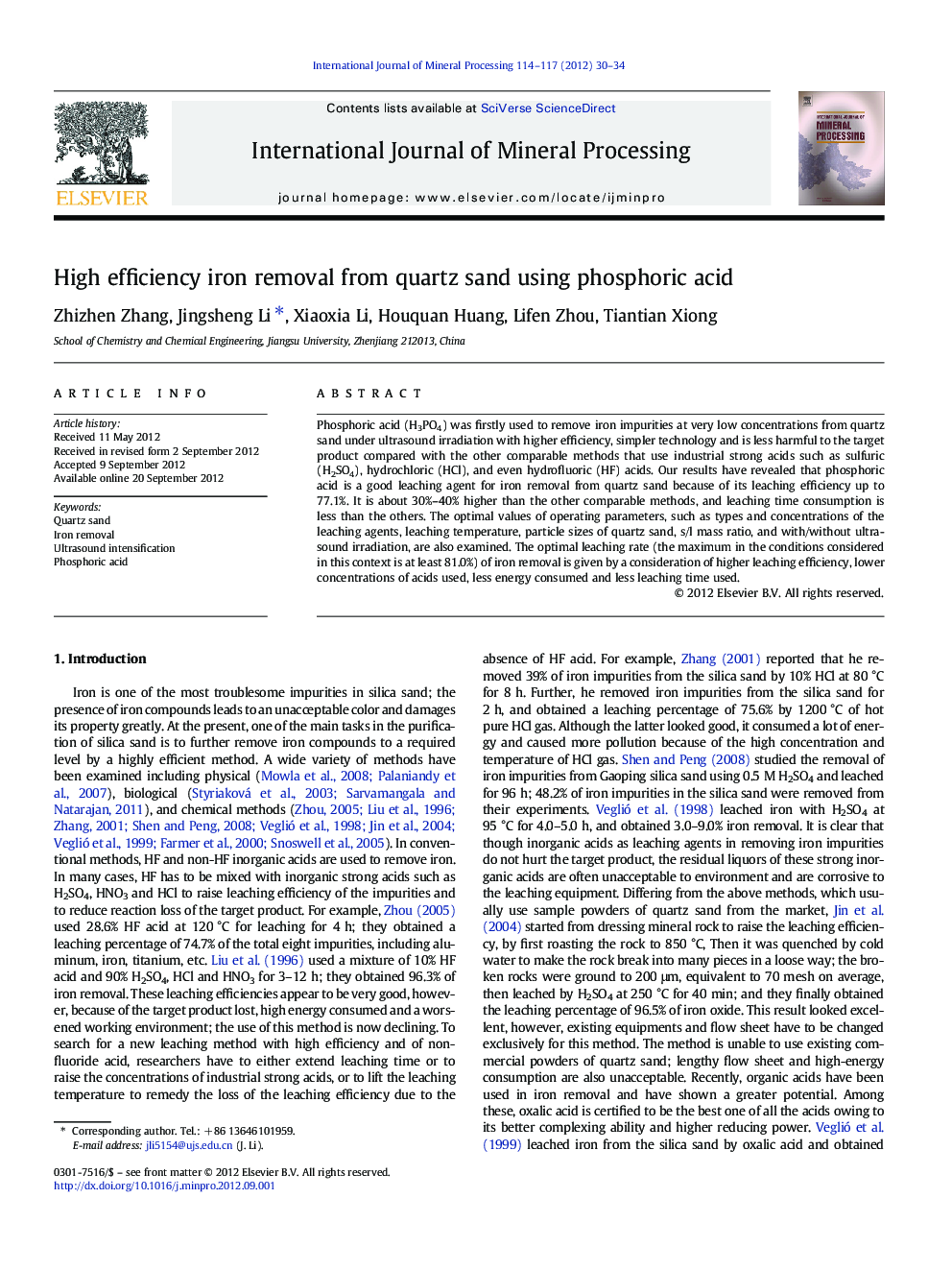| Article ID | Journal | Published Year | Pages | File Type |
|---|---|---|---|---|
| 214123 | International Journal of Mineral Processing | 2012 | 5 Pages |
Phosphoric acid (H3PO4) was firstly used to remove iron impurities at very low concentrations from quartz sand under ultrasound irradiation with higher efficiency, simpler technology and is less harmful to the target product compared with the other comparable methods that use industrial strong acids such as sulfuric (H2SO4), hydrochloric (HCl), and even hydrofluoric (HF) acids. Our results have revealed that phosphoric acid is a good leaching agent for iron removal from quartz sand because of its leaching efficiency up to 77.1%. It is about 30%–40% higher than the other comparable methods, and leaching time consumption is less than the others. The optimal values of operating parameters, such as types and concentrations of the leaching agents, leaching temperature, particle sizes of quartz sand, s/l mass ratio, and with/without ultrasound irradiation, are also examined. The optimal leaching rate (the maximum in the conditions considered in this context is at least 81.0%) of iron removal is given by a consideration of higher leaching efficiency, lower concentrations of acids used, less energy consumed and less leaching time used.
Graphical abstractThe leaching efficiency of H3PO4 is clearly superior to the other industrial strong acids.Figure optionsDownload full-size imageDownload as PowerPoint slideHighlights► Removing iron impurities from quartz by H3PO4 is much superior to other strong acids. ► Leaching yield is 77.1%, about 30%–40% higher than the comparable methods. ► The process hurts non-target product and uses much milder leaching conditions.
